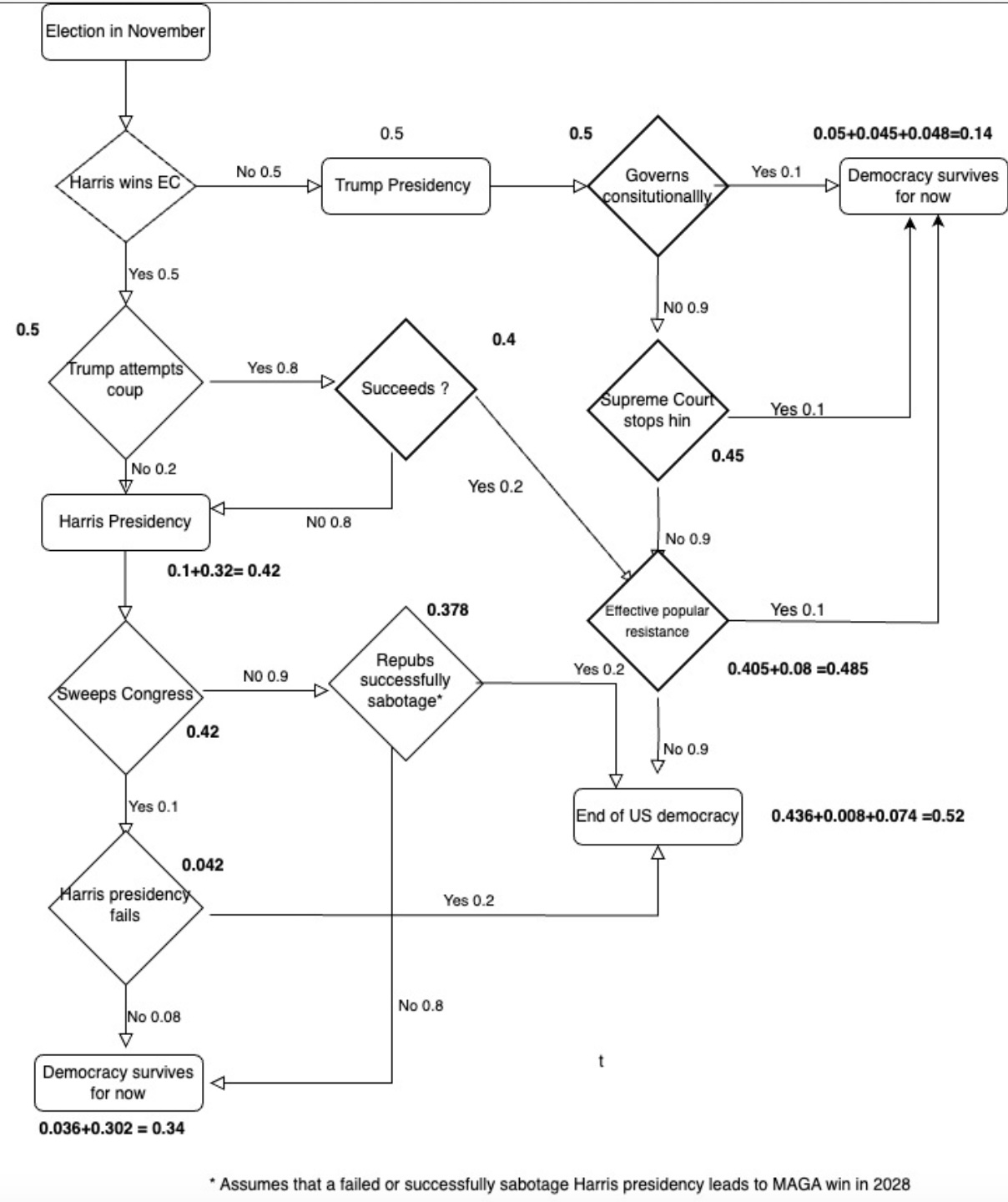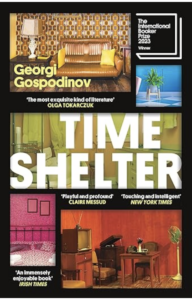American options

Screenshot
This is a flow-chart that the economist and blogger John Quiggin drew up on the Crooked Timber blog to help him think about the various possible paths that the US could follow after tomorrow’s presidential election. The diamonds denote decision nodes — points in the process where things could go either way — and the numbers on the arrows coming out of the nodes represent the probability of that outcome happening. I’m not sure about the logic behind the numbers in bold type beside the various destination boxes. Quiggin says they are the (cumulative) probability of reaching that box. The numbers next to arrows coming out of decision nodes (diamonds) are the probability of that decision.
The chart doesn’t include all the possible decision-nodes that might emerge. But it’s an interesting way of thinking about what could happen. And the only unproblematic path is the vertical one on the left.
Quote of the Day
”If history has a lesson, it is that we don’t learn from it.”
- Stephen Bush, FT, 19/20 October, 2024
Musical alternative to the morning’s radio news
Dvorak | Symphony No. 9 “From the New World” | 3rd movement | Wiener Phil and Karajan
Long Read of the Day
Rituals of Childhood
A remarkable (and sobering) essay by Kieran Healy which explains why one might not want to bring up children in the US now.
Sociologists like me often highlight these rituals of childhood in our writing and teaching. One of the founders of our field, Émile Durkheim, made them the centerpiece of his work. Institutions, he argued, are rituals that bind people to one another as a group. In a ritual, each person finds their place and does their part, and expects everyone else to do the same. Crucially, those involved all see one another participating in the event. By doing so, they enact their collective life in view of one another, demonstrating its reality, expressing its meaning, and feeling its pulse in their veins. That, Durkheim thought, is at root what a society is.
In any given week in America, you can watch as a different ritual of childhood plays itself out. Perhaps it will be in El Paso, at a shopping mall; or in Gilroy, at a food festival; or in Denver, at a school. Having heard gunshots, and been lucky enough to survive, children emerge to be shepherded to safety by their parents, their teachers, or heavily-armed police officers…
Do read it.
Books, etc.
Nostalgia ain’t what it used to be

We were talking about the power of nostalgia in contemporary politics and my friend Gerard told me about this novel which won the Booker Prize in 2023. The blurb is intriguing. Here’s an excerpt:
An enigmatic flâneur named Gaustine opens a ‘clinic for the past’ that offers a promising treatment for Alzheimer’s sufferers: each floor reproduces a decade in minute detail, transporting patients back in time.
As Gaustine’s assistant, the unnamed narrator is tasked with collecting the flotsam and jetsam of the past, from 1960s furniture and 1940s shirt buttons to scents and even afternoon light. But as the rooms become more convincing, an increasing number of healthy people seek out the clinic as a ‘time shelter’, hoping to escape from the horrors of our present – a development that results in an unexpected conundrum when the past begins to invade the present.
It seems timely. One reviewer wrote that “Gospodinov’s vision of tomorrow is the nightmare from which Europe knows it must awake”. That struck a chord with me. As the first videos of Putin’s invasion of Ukraine began to appear, my first thought was they they were reminiscent of the celluloid newsreels of 1940 — shattered buildings, rubble-strewn streets, shell-shocked people — except this time the ‘newsreels’ were in colour. And I remember thinking that Europe’s long post-war holiday from history is over.
So, of course, I’ve ordered a copy.
My commonplace booklet
Last week Andrew Sullivan asked “Does Liberal Democracy End Next Week?” — and came up with a definite maybe.
This Blog is also available as an email three days a week. If you think that might suit you better, why not subscribe? One email on Mondays, Wednesdays and Fridays delivered to your inbox at 6am UK time. It’s free, and you can always unsubscribe if you conclude your inbox is full enough already!
